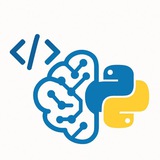💡 Building a Simple Convolutional Neural Network (CNN)
Constructing a basic Convolutional Neural Network (CNN) is a fundamental step in deep learning for image processing. Using TensorFlow's Keras API, we can define a network with convolutional, pooling, and dense layers to classify images. This example sets up a simple CNN to recognize handwritten digits from the MNIST dataset.
Code explanation: This script defines a simple CNN using Keras. It loads and normalizes MNIST images. The
#Python #DeepLearning #CNN #Keras #TensorFlow
━━━━━━━━━━━━━━━
By: @CodeProgrammer ✨
Constructing a basic Convolutional Neural Network (CNN) is a fundamental step in deep learning for image processing. Using TensorFlow's Keras API, we can define a network with convolutional, pooling, and dense layers to classify images. This example sets up a simple CNN to recognize handwritten digits from the MNIST dataset.
import tensorflow as tf
from tensorflow.keras import layers, models
from tensorflow.keras.datasets import mnist
import numpy as np
# 1. Load and preprocess the MNIST dataset
(train_images, train_labels), (test_images, test_labels) = mnist.load_data()
# Reshape images for CNN: (batch_size, height, width, channels)
# MNIST images are 28x28 grayscale, so channels = 1
train_images = train_images.reshape((60000, 28, 28, 1)).astype('float32') / 255
test_images = test_images.reshape((10000, 28, 28, 1)).astype('float32') / 255
# 2. Define the CNN architecture
model = models.Sequential()
# First Convolutional Block
model.add(layers.Conv2D(32, (3, 3), activation='relu', input_shape=(28, 28, 1)))
model.add(layers.MaxPooling2D((2, 2)))
# Second Convolutional Block
model.add(layers.Conv2D(64, (3, 3), activation='relu'))
model.add(layers.MaxPooling2D((2, 2)))
# Flatten the 3D output to 1D for the Dense layers
model.add(layers.Flatten())
# Dense (fully connected) layers
model.add(layers.Dense(64, activation='relu'))
model.add(layers.Dense(10, activation='softmax')) # Output layer for 10 classes (digits 0-9)
# 3. Compile the model
model.compile(optimizer='adam',
loss='sparse_categorical_crossentropy',
metrics=['accuracy'])
# Print a summary of the model layers
model.summary()
# 4. Train the model (uncomment to run training)
# print("\nTraining the model...")
# model.fit(train_images, train_labels, epochs=5, batch_size=64, validation_split=0.1)
# 5. Evaluate the model (uncomment to run evaluation)
# print("\nEvaluating the model...")
# test_loss, test_acc = model.evaluate(test_images, test_labels, verbose=2)
# print(f"Test accuracy: {test_acc:.4f}")
Code explanation: This script defines a simple CNN using Keras. It loads and normalizes MNIST images. The
Sequential model adds Conv2D layers for feature extraction, MaxPooling2D for downsampling, a Flatten layer to transition to 1D, and Dense layers for classification. The model is then compiled with an optimizer, loss function, and metrics, and a summary of its architecture is printed. Training and evaluation steps are included as commented-out examples.#Python #DeepLearning #CNN #Keras #TensorFlow
━━━━━━━━━━━━━━━
By: @CodeProgrammer ✨
❤11
Matplotlib_cheatsheet.pdf
3.1 MB
Main features of Matplotlib:
#doc #cheatsheet #PythonTips
Matplotlib Cheatsheet (
https://t.me/CodeProgrammer
Please open Telegram to view this post
VIEW IN TELEGRAM
❤1👍1
